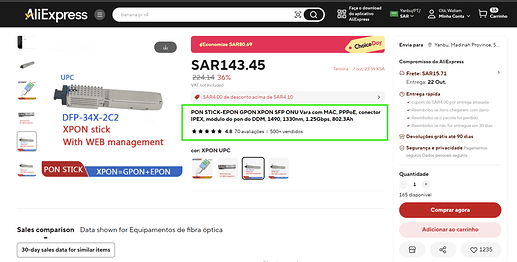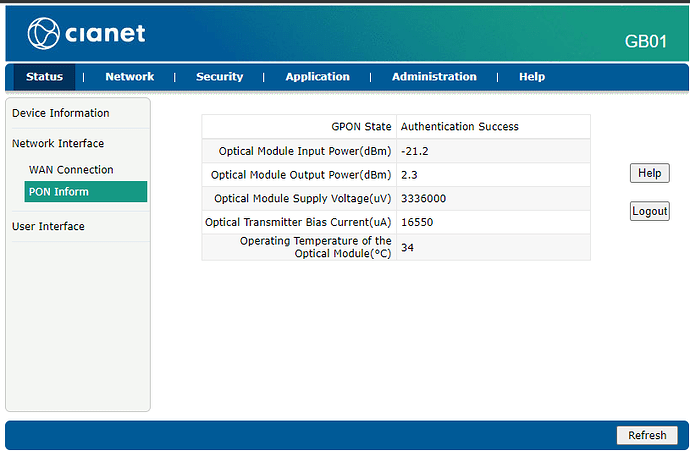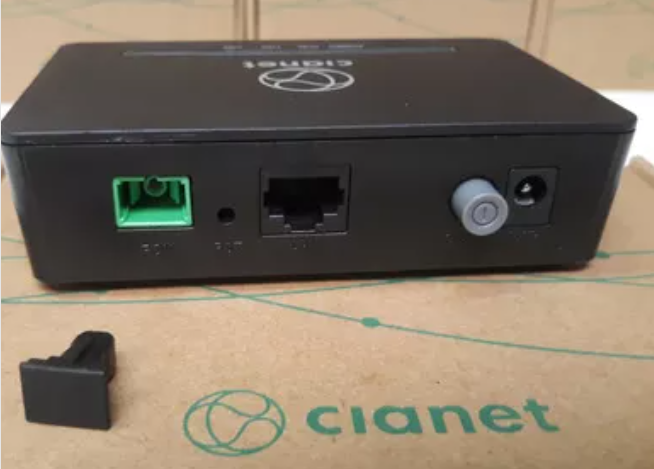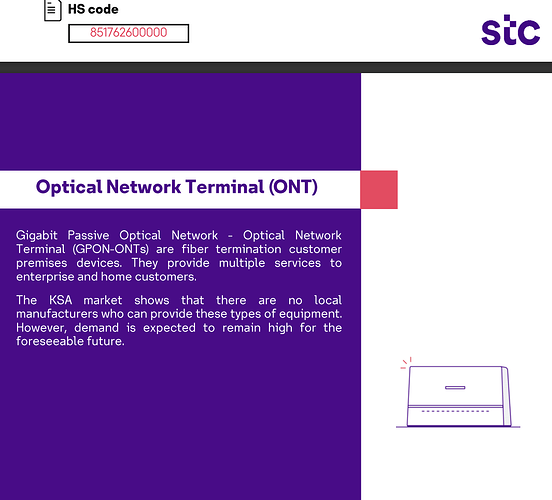Is this Brazil? Because it sounds very familiar to me.
Did you still have internet or not. What is your Provider?
I did not understand the answer!
Usually you have a service department which provides such infomation for free! As I posted it !!! And if not you easy ask them!
You have mony that they want!!! You are new customer! I did not understand the problem …
I think Brazeill better than us in Saudi Arabia
Great point … So I can take XPON this one and I will connect it directly to BPI-R4 on SFP port ? https://pt.aliexpress.com/item/1005003515662920.html
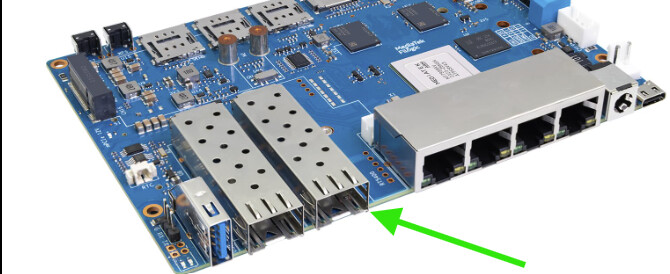
How to know my fiber line or port on main router is APC or UPC ?
We can say this thing maybe when These network providers are not here in this country KSA … Only we have a two main networks providers (Zain & STC) both of them are following same standards to not share anything with costumers …
No you can not! → the wavelengths for Rx and Tx have to match! Otherwise it is useless
I do not know much about GPON but as you can see the wavelengs could be different:
![]()
About your port, analyze the GPON characteristics that your ISP provider provided you, this is the type of port. Send a photo.
Most of the time, someone would have already figured out and posted how to setup specifically for your provider. Following any other instructions is useless and you may get locked out by your provider, when using the wrong settings and/or password.
@Lorem_amicus @mcd007
So now where we reached ?![]()
Can we use XPON on Banana BPI-R4 . if its required to know (wavelengths for Rx and Tx ) how I can see it in Fiber Router of Provider
My ears are open for any advise and comment …
I think we should make new topics …
mixing brazil and saudi arabia is not good.
I have not so much time today.
I found this: https://shop.mobily.com.sa/fiber/?lang=en
![]()
The forum here and on openwrt are full of information with problems and solutions. Please try to find it. It will give you a feeling for the topic …
Already I searched on OpenWRT but no luck … I have topic also their …
yeah free router by all providers but when you ask them about the specs or what is inside they will not tell you
This is one of provider routers in our market (Provider Name :STC)
if XPON will let BPI-R4 work will be great to buy it or buying GPON
@KFO I created a specific topic for our debt, post your equipment to get help too.
@Lorem_amicus This has nothing to do with the country, it’s a question of which equipment to use based on the ONUs we have, but thanks for the help.
Yes and no, the connection is based on physics, but for finding someone who can help, I would create a topic with my provider and my country.
Even with the same technology, the provider could need a special software configuration!
Yes I’m a layman for PON. I have an AON fiberoptics Internet at home. For me it was simple get the connection work. But even for AON different configuration could be nessesary!
I did not find the name of the chat “Bananan BPI-R4 + Fiber Optic network with ISP Provider” well chosen.
YOU have a special problem:
→ Bananan BPI-R4 + Fiber Optic network SFP Modul - Cianet Brazil
→ Replace Onu Cianet Gb01 with BPI-R4
![]() Now the topics are mixed again …
despite from that you will get help
Now the topics are mixed again …
despite from that you will get help ![]()
You should worry about compatibility with ISP instead of BPI. Unlike WLAN, SFP/Fiber Optics is all established and standard stuff. First confirm that ISP is using GPON.
Second, if they are using GPON you need to confirm how they authenticate. Most ISPs would just require the serial number. Almost all GPON ONUs sold to consumers allow configuring this - some via web interface while some via UART or any other shell via telnet/ssh, although some of them need custom firmware, usually seller already flashes them.
Some ISPs require a few extra fields other than serial number to match for successful GPON auth. And even if you have all of the configuration, certain OLTs will simply be incompatible with certain ONUs. For example, with the ISP in my area, if they have Alactel Lucent OLT, it doesn’t work with certain ONUs like TP-Link XZ000-G7.
Once you have past getting GPON connectivity (regarded as O5 state), you have to figure out the VLANs. ISPs will provide separate VLANs for IPTV, Internet and VoIP. You have 2 options depending on what equipment you have, some ONUs will have a transparent mode for which you will need to configure the VLAN tags in OpenWRT, while others will have a VLAN tagged mode which will pass through your internet VLAN ID directly.
Then there is further authentication via PPPoE. In my case they used VoIP phone number as username and account number as password but it depends. Some ISPs use IPoE instead of PPPoE in which case you can enable DHCP client on WAN and use it. Sometimes the MAC Address on the PPPoE interface needs to match the ONU originally set up by the ISP.
All of this is best discussed outside of BPI and OpenWRT forums as it is very ISP specific.
check with your ISP to see if they have any specific requirements or recommendations.
Are you able to say why the MA5671A works when the BPI-R4 doc says “The SFP serdes speed of BPI-R4 is fixed at 10Gbps, so only SFP that support this can be used!”?
As far as I’m aware the MA5671A is only able to establish connections at 1G or 2.5G.
Bpi-r4 can use different pcs for 1G/2.5G speeds,so basicly it should work (from serdes pov)
Oh great! I have a BPI-R4 ordered but not yet delivered. I’m hoping it with work with my ISP provided G-010S-P (and it looks like it will).
By the way, what does “pcs” stand for (in your last message)?
Afaik it is some kind of phy that can switch the speed and connect to the mac with a specific serdes speed (2g5 for the sgmii serdes and 10g for the 5g/10g usxgmii pcs).
